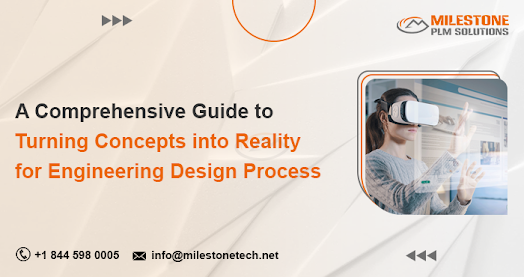A Comprehensive Guide to Turning Concepts into Reality for Engineering Design Process
The Engineering Design Process is the cornerstone of transforming abstract ideas into tangible, functional realities. In the dynamic realm of engineering, where innovation is paramount, mastering this process is essential for creating cutting-edge solutions. This comprehensive guide delves into the intricacies of the Engineering Design Process, exploring its key phases and emphasizing the role of technology, including AI tools, in enhancing efficiency and precision.
Understanding the Engineering Design Process:
The Engineering Design Process is a systematic and iterative approach that engineers use to develop solutions to problems. The process typically involves several distinct phases, each crucial for ensuring the success of the final product. These phases commonly include problem definition, research, concept generation, prototype development, testing, and refinement.
Problem Definition: The first step in the Engineering Design Process is clearly defining the problem or challenge at hand. Engineers must understand the requirements, constraints, and objectives to create a solid foundation for the subsequent phases. In the realm of engineering services, having a comprehensive grasp of the client's needs is imperative.
Research and Analysis: Once the problem is defined, extensive research and analysis follow. This involves gathering relevant data, studying existing solutions, and understanding the implications of various design choices. In engineering and Building Information Modeling (BIM) services, leveraging technology for data collection and analysis can greatly expedite this phase.
Concept Generation: The creative aspect of the Engineering Design Process comes to the forefront during concept generation. Engineers brainstorm and develop multiple potential solutions, considering different approaches and technologies. In the age of advanced AI tools, simulations and algorithms can aid in rapidly generating and evaluating numerous design possibilities.
Prototype Development: Building prototypes allows engineers to test and validate their concepts. This hands-on phase is critical for identifying potential issues and refining the design. Utilizing technology like 3D printing and virtual prototyping tools enhances precision and accelerates the prototyping stage.
Testing and Evaluation: Rigorous testing follows prototype development. Engineers assess the performance, durability, and safety of the product. Advanced sensors, data analytics, and AI algorithms can streamline the testing process, providing real-time insights and facilitating quicker decision-making.
Refinement: Based on the testing results, the design undergoes refinement. Iterative improvements are made to enhance functionality, efficiency, and user satisfaction. BIM services can play a pivotal role in this phase by facilitating collaboration among multidisciplinary teams and ensuring seamless integration of design modifications.
The Role of Technology in Enhancing the Engineering Design Process:
Building Information Modeling (BIM): BIM has revolutionized the way engineering projects are conceptualized and executed. It enables a comprehensive digital representation of a project, fostering collaboration among architects, engineers, and construction teams. BIM services provide real-time data, facilitate clash detection, and enhance overall project coordination.
Artificial Intelligence (AI) Tools: AI tools have become indispensable in the Engineering Design Process. Machine learning algorithms can analyze vast datasets to identify patterns and optimize designs. Generative design, a subset of AI, automates the creation of design options based on predefined parameters, enabling engineers to explore innovative solutions efficiently.
Virtual Reality (VR) and Augmented Reality (AR): VR and AR technologies offer immersive experiences that aid in visualizing and refining designs. Engineers can walk through virtual prototypes, identify potential issues, and make informed decisions. This level of interactivity enhances communication among team members and stakeholders.
Conclusion:
The Engineering Design Process is a multifaceted journey from ideation to realization. Embracing the latest technologies, including BIM services and AI tools, empowers engineers to navigate this process with greater efficiency, precision, and innovation. As we continue to push the boundaries of engineering, mastering these tools becomes not just a choice but a necessity for turning concepts into reality.




Comments
Post a Comment